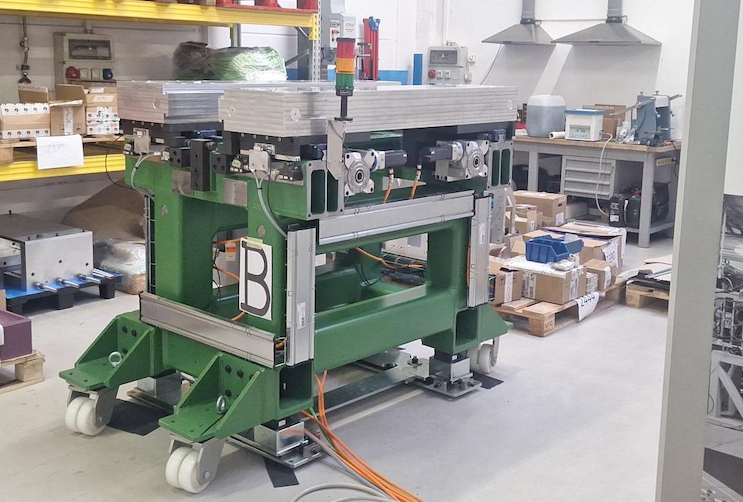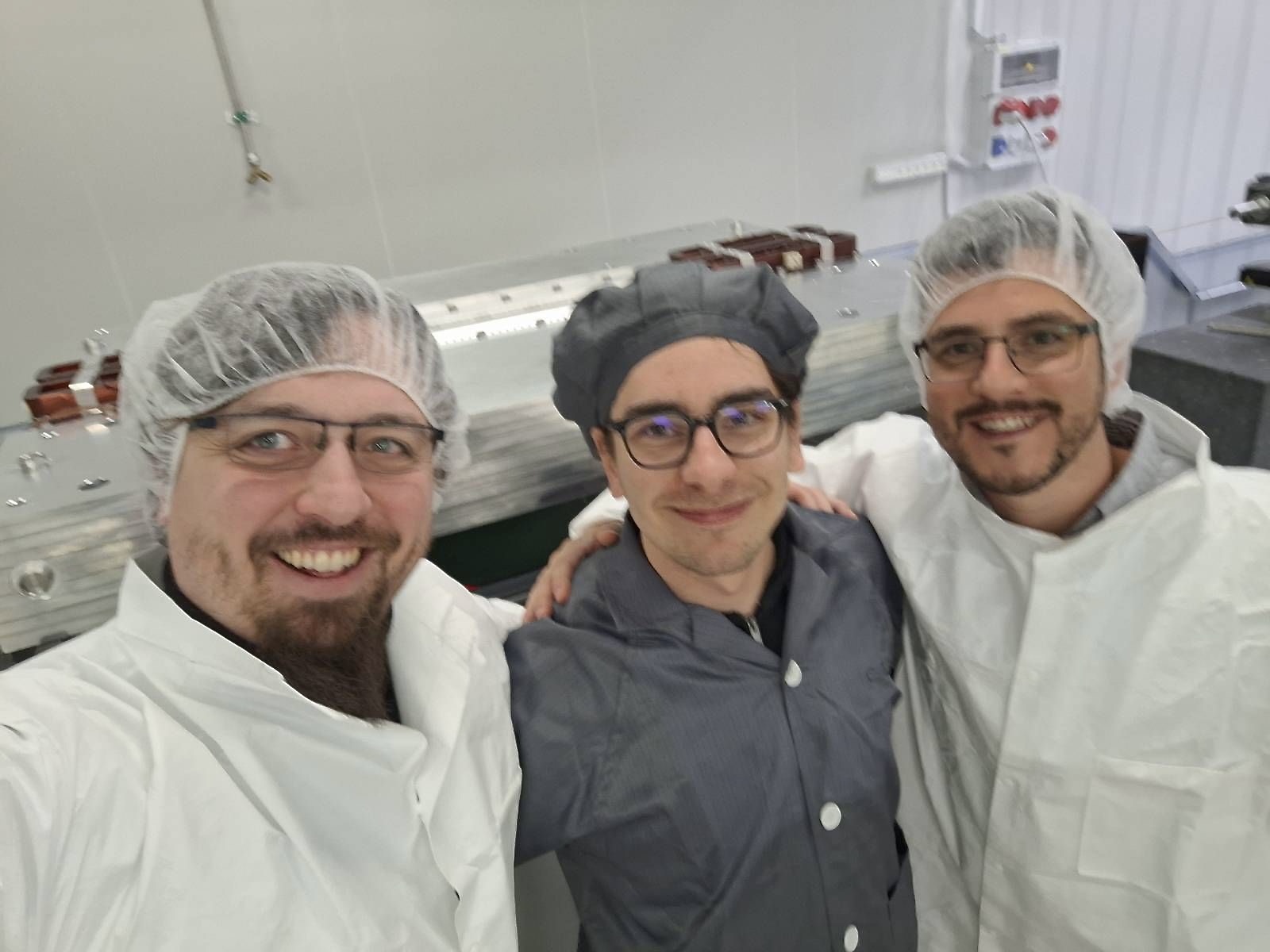We developed a state-of-the-art control system for two linearly polarizing undulators (developed by Kyma S.p.A.) installed at the Sirius synchrotron light source in São Paulo at Laboratório Nacional de Luz Síncrotron (LNLS). The undulators’ high-precision sub-micron mechanics, combined with our robust real-time control system, enable advanced Flyscan procedures. In these procedures, the undulators move continuously while staying precisely synchronized with the monochromator. This allows researchers to acquire data on-the-fly with optimal beam properties, thus allowing new types of faster spectroscopy or experiments under dynamic conditions.
Modern synchrotron light sources (3rd generation and onwards) use undulators as insertion devices to generate high brilliance radiation. With higher brilliance, physicists are able to observe rare phenomena and achieve statistically significant results.
Undulators are periodic structures made of dipole magnets mounted on mechanical girders. As the electron beam travels through their alternating magnetic fields, it emits synchrotron radiation. Operators can optimize this radiation by precisely adjusting the magnetic structures. The required positioning accuracy is sub-micrometer, while motion speeds can reach 10 cm/s. Given that each girder can weigh several tons, achieving this combination of precision, speed, and robustness requires a meticulously engineered integration of mechanical, motor, and control systems.
In this project, we achieved those demanding goals — and went a step further by implementing support for Flyscan procedures. In Flyscan mode, undulators move continuously and remain synchronized with the beamline’s monochromator within 2 ms, enabling on-the-fly data acquisition. This introduces a completely new level of real-time control, system integration, and performance beyond standard undulator operation.

The undulator mechanics are driven by four Beckhoff motors, which control the motion of the girders along four virtual axes:
Each physical axis includes a nanometer-resolution absolute linear encoder (Renishaw) to ensure sub-micrometer accuracy.
The Beckhoff motion controller serves as the central system implementing the real-time control logic:
Start, stop, pause the motion (absolute, relative, jog) of each individual motor or the virtual axis
Monitor encoder feedback and close the control loop for all complex axes (gap, offset, taper, skew)
Synchronize the Flyscan motion with the monochromator
Expose motion data and control parameters to EPICS
In Flyscan operation, the user defines the GAP trajectory in advance via a text file. Each line specifies a target position, velocity, and acceleration to be reached within the next 2 ms. The complete trajectory is preloaded onto the motion controller.
There are two Flyscan modes:
Undulator as master: in this procedure, as the trajectory is being executed, Beckhoff motion controller sends a DO signal to undulator every ~2 ms reporting when the next point in the trajectory was reacehed. The monochromator must verify that both systems remain synchronized.
Undulator as slave: in this procedure, as the trajetory is being executed, Beckhoff motion controller receives a DI signal from the moncohromator that it reached the next position (every ~2 ms). Upon receiving the signal, undulator records the current position and verifies that the systems are still synchronized.
The SIRIUS facility uses EPICS as its control system framework. Our solution provides an EPICS IOC running on the Beckhoff motion controller, which exposes all relevant parameters, values, and commands as process variables (PVs) via Channel Access to the central accelerator control system.

The control system has been successfully deployed and commissioned on two identical Kyma undulators at the LNLS SIRIUS synchrotron. Both systems are operating to specification and are already in use for experiments.
The first absorption spectra obtained using the Flyscan procedures were presented at the ICALEPCS 2025 conference in Chicago, USA.
BigScience
Accelerators
Beckhoff
EPICS
SIRIUS
Ready to discuss your next project? Contact us and we'll help you achieve your goals.
We use cookies to enhance your browsing experience, analyze site traffic, and personalize content. By clicking "Accept", you consent to our use of cookies.